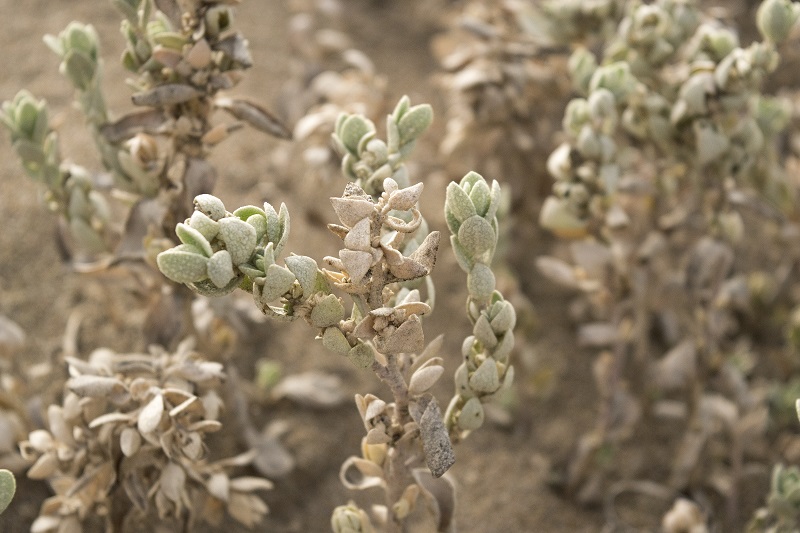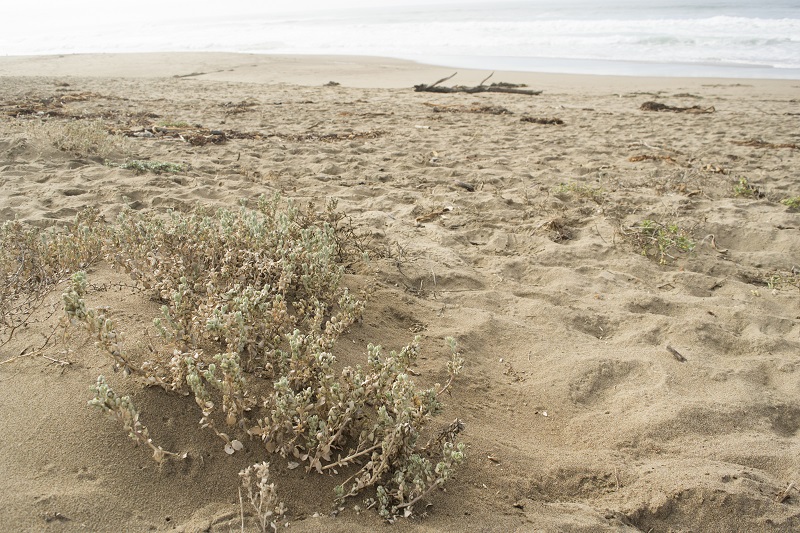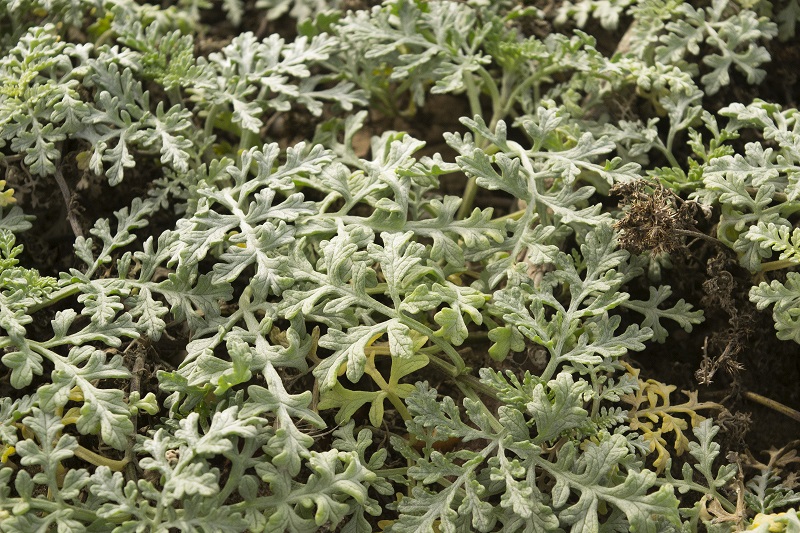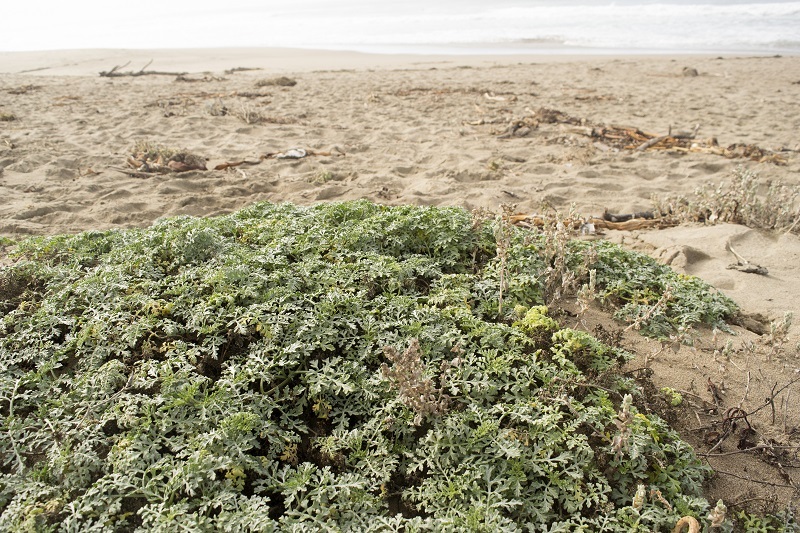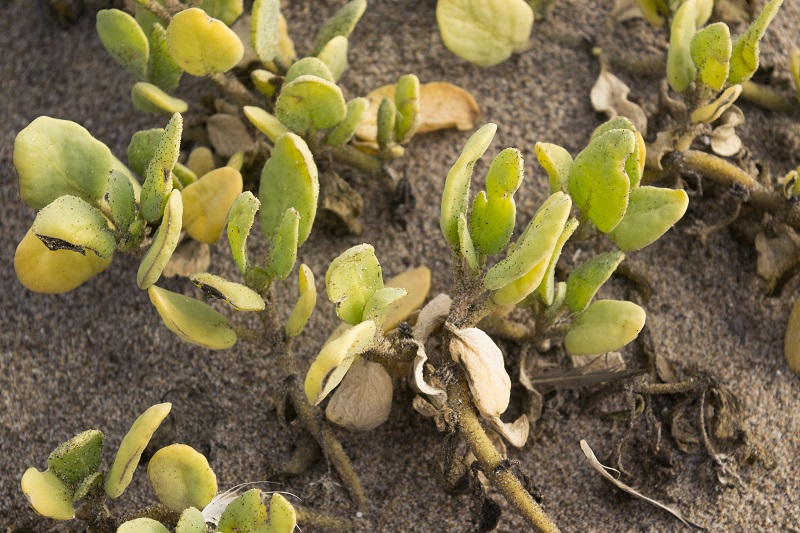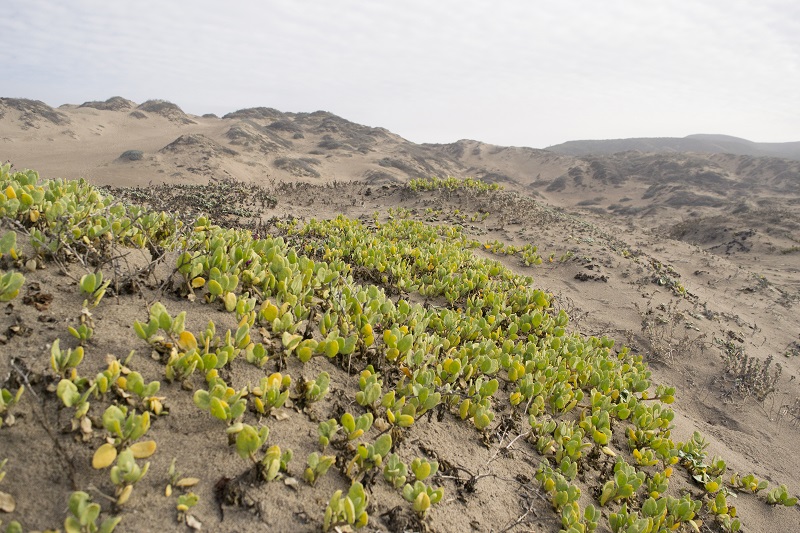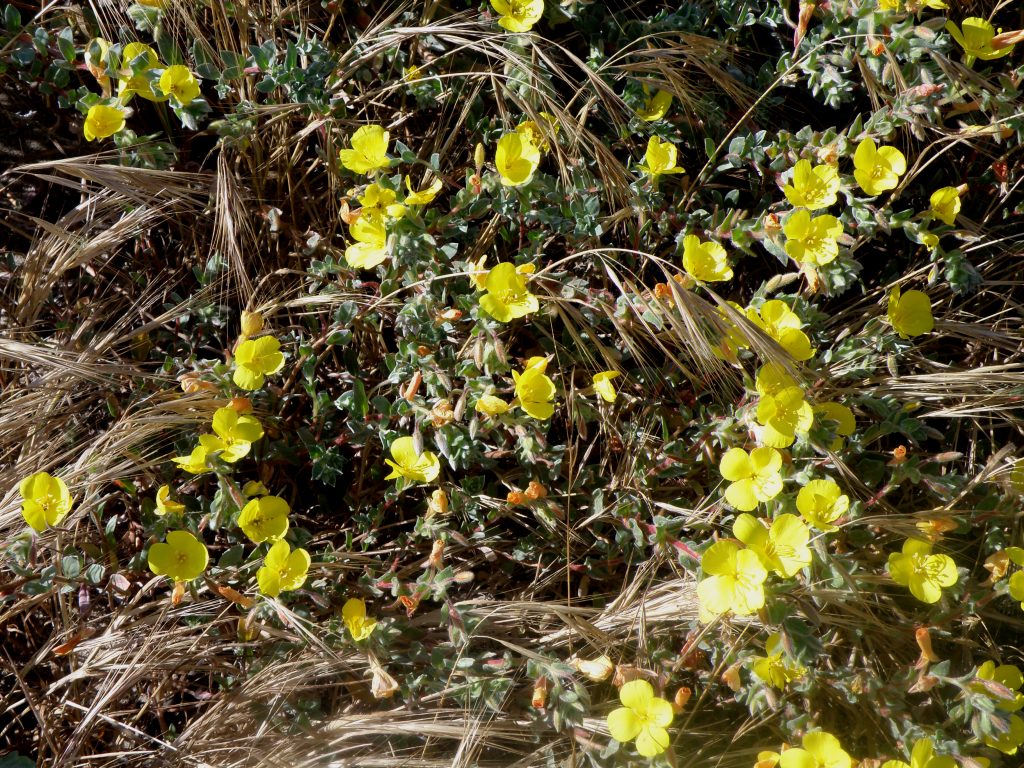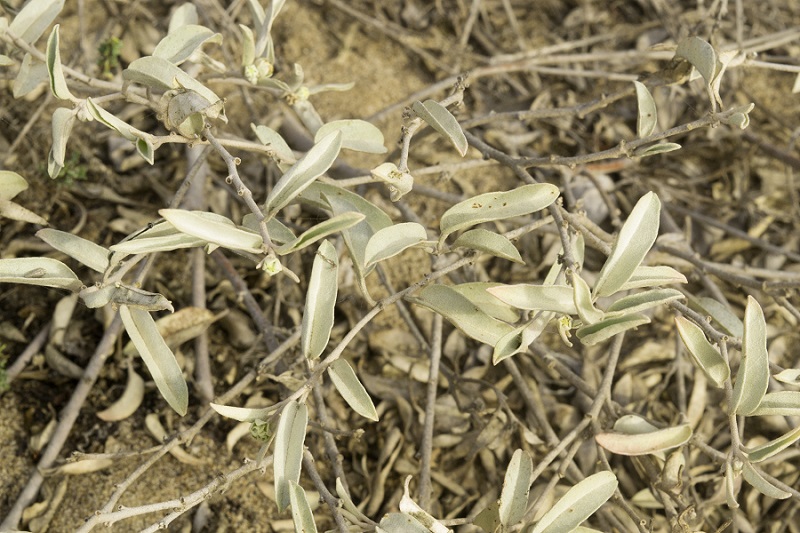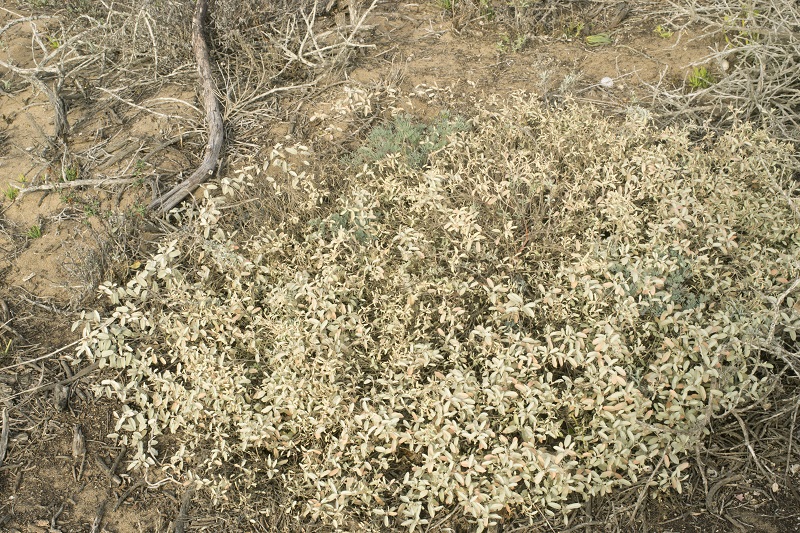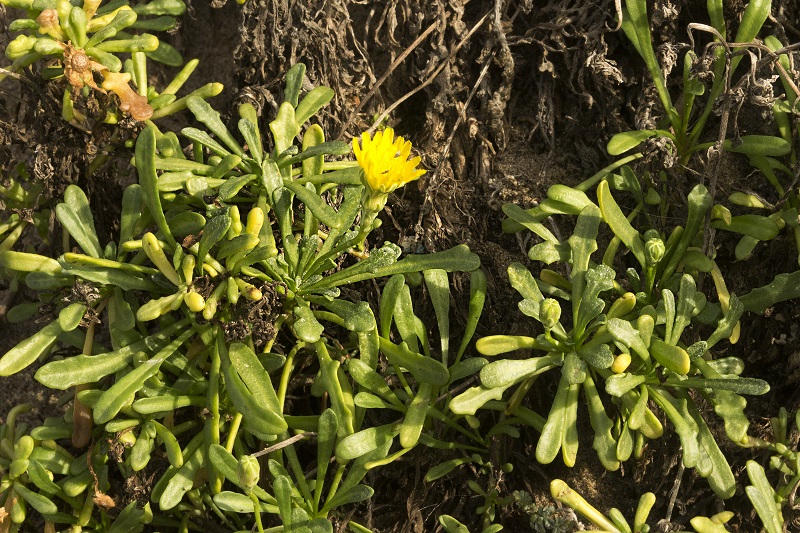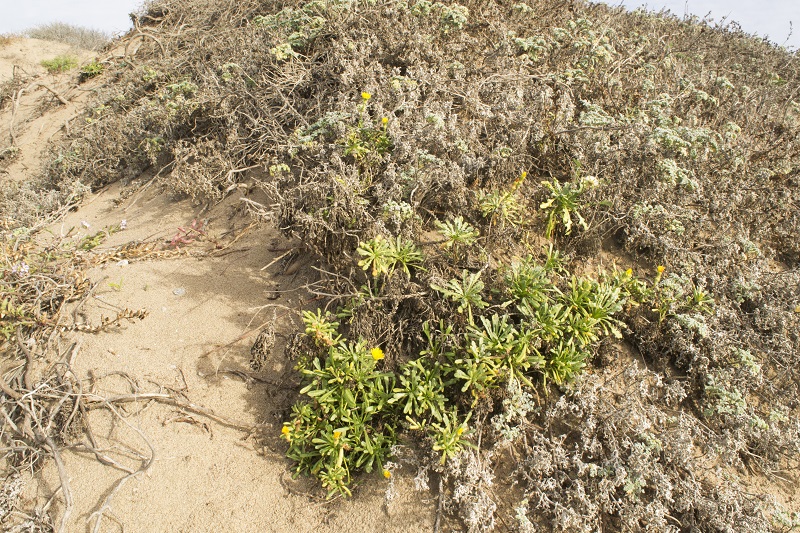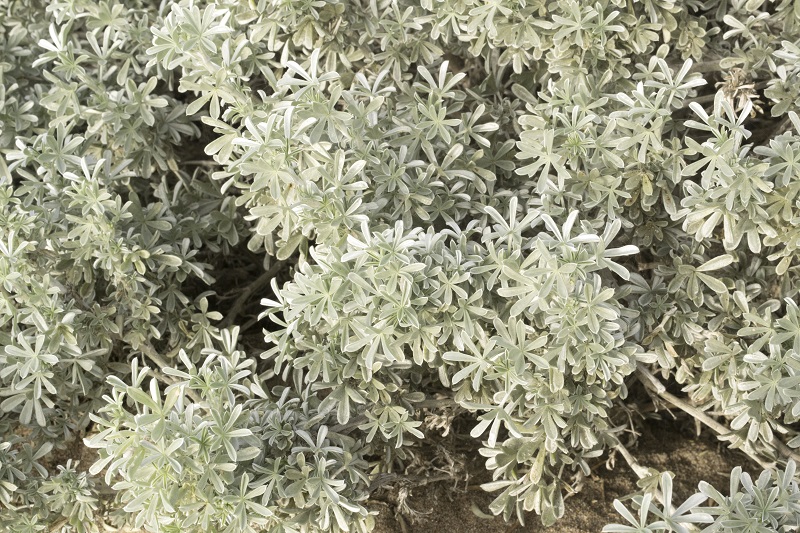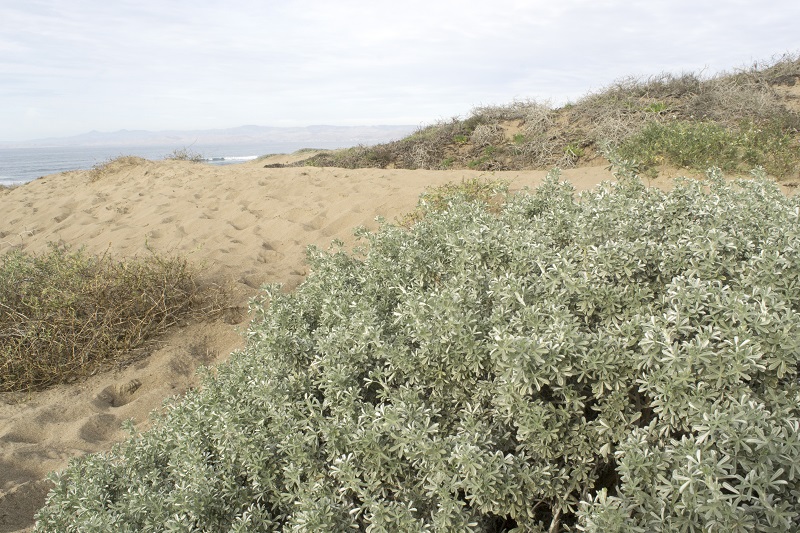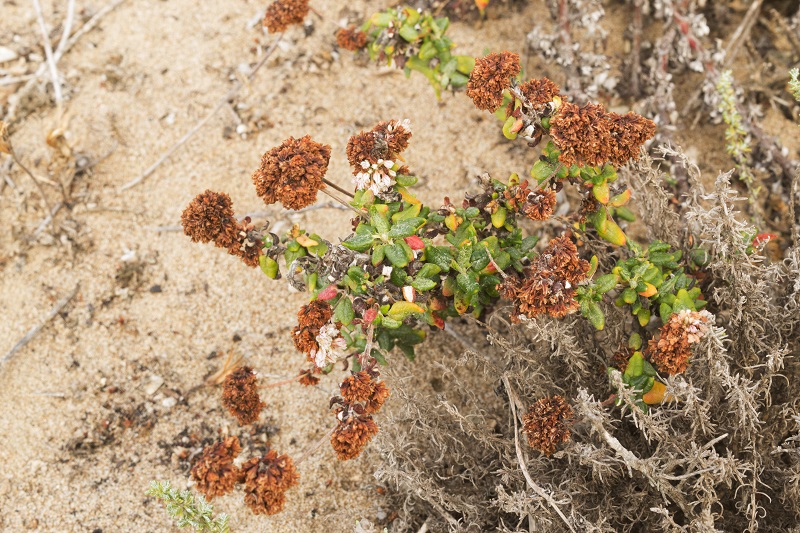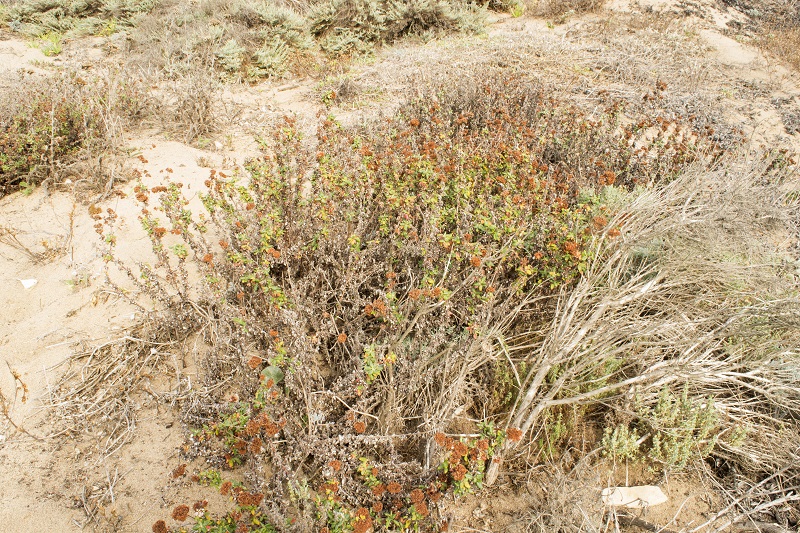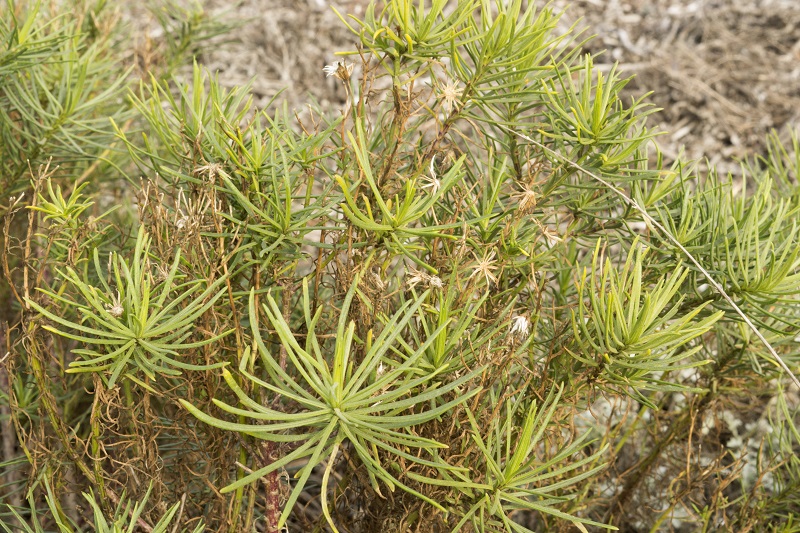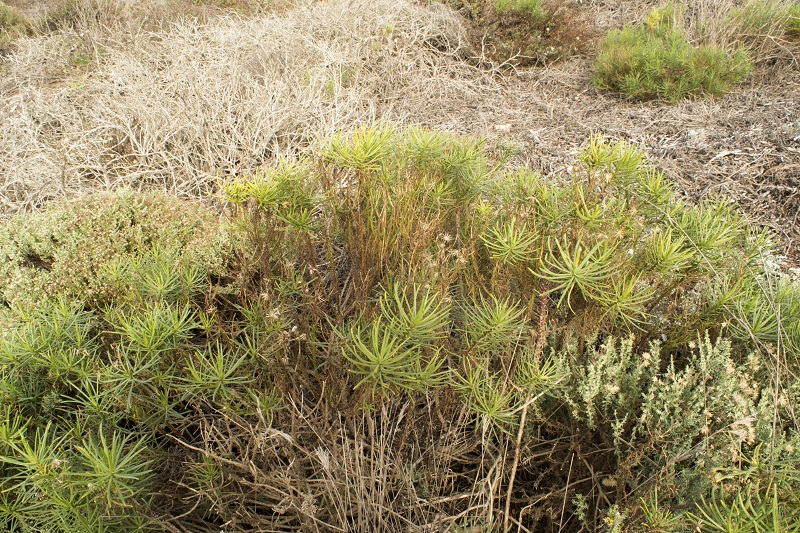This is our first exploration of a specific plant community found within the Morro Bay watershed. Today, we will learn about the pioneer dunes and foredunes communities located on the Morro Bay Sandspit.

This area is probably the harshest environment for plants found in the Morro Bay watershed. Because of its direct exposure to the Pacific Ocean, the Sandspit is a very windy place: the constant salty, sandy wind coming off the ocean keeps plants at a low, small stature. Since sand does not hold water very well, these plants experience moisture conditions similar to a desert. Because of these harsh conditions, the plants that grow here have developed various adaptations, meaning that they have evolved in specific ways that make the Sandspit habitable for them. These adaptations include small succulent leaves (which help with water retention), and stems that can root at the nodes (which help stabilize the plant in sand).
Pioneer dunes
Most of the sand dunes are not stabilized and continue to shift at a rate faster than most plants can establish themselves. These actively changing dunes are called pioneer dunes and exist on the side of the Sandspit facing out towards the Pacific Ocean.
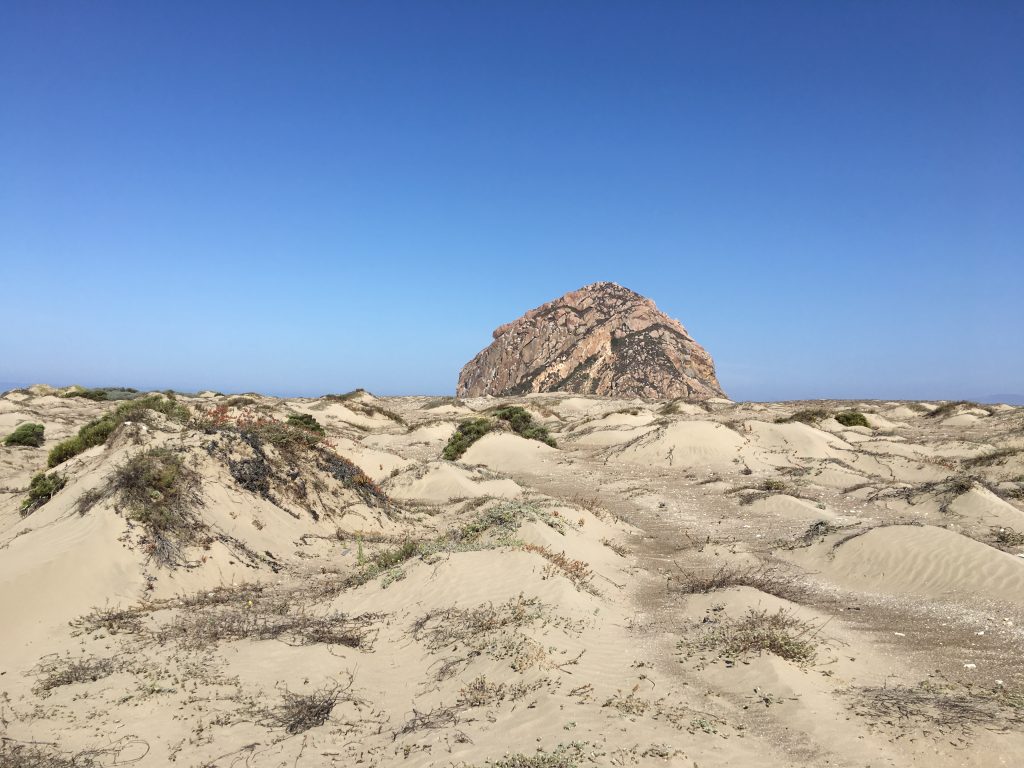
These pioneer dunes, since they are closest to the beach and high tide line, contain only the most salt-tolerant species of plants, including beach saltbush (Atriplex leucophylla), beach-bur (Ambrosia chamissonis), and sand verbenas (Abronia).
Beach saltbush (Atriplex leucophylla). This species is a common native found in sandy areas. The succulent leaves contain glands that excrete excess salt taken up by the roots due to the plant’s close proximity to the shoreline. Image Source: MBNEP.
Beach bur (Ambrosia chamissonis). Have you ever gotten something sharp stuck on your sock or pant leg while you’re hiking? If you’re out on the sand dunes, it is likely a bur from this plant. Image Source: MBNEP.
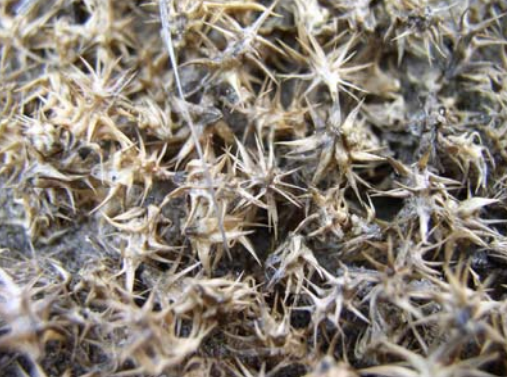
Sand verbena (Abronia maritima). This species, along with beach bur, forms flat mats that grow low to the ground and are able to withstand the shifting nature of pioneer dunes. Image Source: MBNEP.
Foredunes
Sand that accumulates above the high tide line is less influenced by salt spray because it is further away from the beach. The sand that accumulates at these higher elevations creates foredunes. These dunes are not actively changing and support a broader range of species that can be found in other plant communities.

Here, you will find dune evening primrose (Camissoniopsis cheiranthifolia), croton (Croton californicus), and dunedelion (Malacothrix incana).
Beach evening primrose (Camissoniopsis cheiranthifolia cheiranthifolia). While similar-looking to sand verbena at first glance, beach evening primrose forms four-petaled flowers at the tips of each branch while sand verbena forms many small flowers arranged in neatly rounded heads. Image Sources: Roy Luck and Laurie Avocado.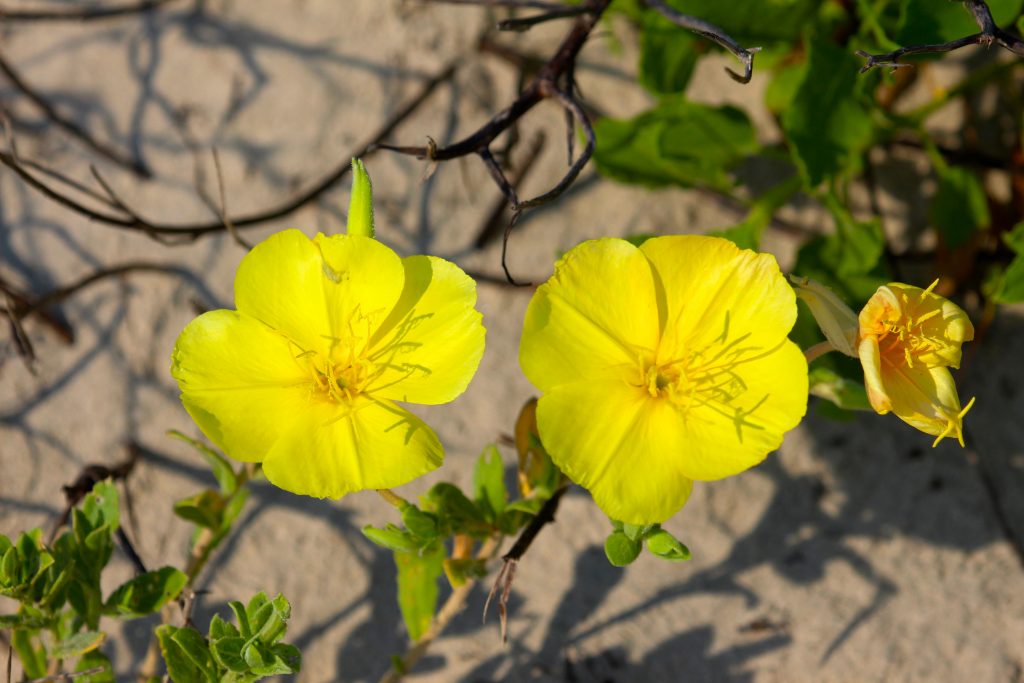
Croton (Croton californicus). This is a common ground-cover plant found in stabilized dunes. Image Source: MBNEP.
Dunedelion (Malacothrix incana). A native cousin of the more commonly-recognized invasive European dandelion (Taraxacum officinale), dunedelion is less commonly found due to increasing coastal development. Image Source: MBNEP.
Morro Dunes Complex
Higher up in elevation, the foredunes have become established over time, allowing for the coastal dune scrub community to exist. Species diversity is much higher here than in the pioneer and lower foredunes because there is a greater amount of fertile soil and water, and a much lower salt content. This community exists throughout a dune system known as the Morro Dunes Complex, which you can find continuously along the coast from Cayucos south to Montana de Oro State Park. Just look for these plants:
Silver Dune Lupine (Lupinus chammissonis). This plant is common within the sand dunes system and is easy to identify by its silvery, hairy leaflets and fragrant, purple flowers that bloom in the spring. Image Sources: MBNEP.
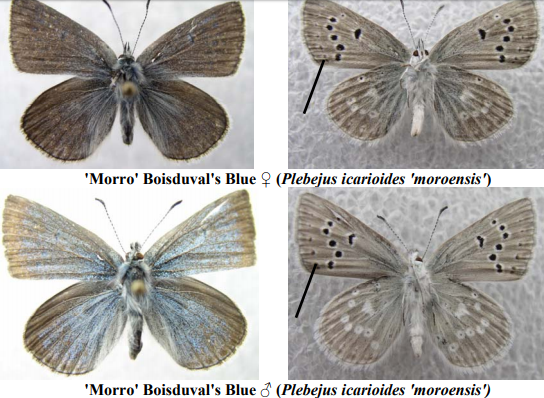
Coastal buckwheat (Eriogonum parvifolium). This plant’s leaves are short, triangular, and fleshy in comparison to Eriogonum fasciculatum, a different species of buckwheat found in the coastal scrub plant community. Stay tuned for a post about coastal scrub! Image Source: MBNEP.
Senecio (Senecio blochmaniae). Senecio is commonly found on stabilized dunes and is easily identified by its single stem and long, wiry leaves. In the spring, its blooms are a bright yellow. Image Source: MBNEP.
Wildlife in dune communities
When exploring the Morro Bay Sandspit to find these native plants, you might see these small shorebirds scurrying by. Western snowy plovers (Charadrius alexandrinus nivosus) are a threatened species that live on the Sandspit. They make their nests in small depressions in the sand, which are easily overlooked. Keep an eye out for these birds and their nests when you are walking, and be sure to allow them plenty of space as you pass by.

To find out more about the native plants described in these blog posts, the Trees and Shrubs of California guidebook and the Calflora website are excellent sources of information. Our next Native Plants blog post in April will explore the coastal scrub plant community, a very common and pleasantly aromatic community found throughout our watershed.
